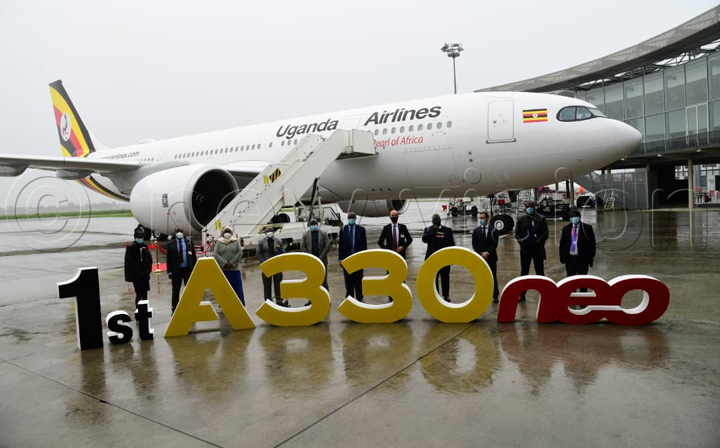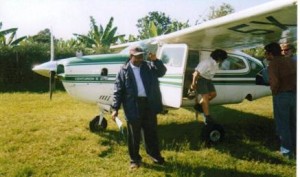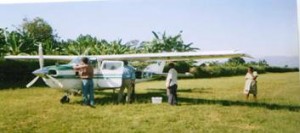UGANDA’S CULTURES TODAY
Uganda is one East Africa country that is greatly endowed by nature in terms of culture and history. While here, you will be surprised to see and take pictures of the most endangered group of people; the pygmies locally referred to as the Batwa in the rain forests of south western part of the country. These people have the most interesting behaviors and characters and you will love to spend time with them even a single second will leave a broad smile on your face. This group feeds on bush meat and fruits. This makes hunting and fruit gathering their main activities carried out to ensure their survival. It’s interesting to see and interact with a group of people that lives in forests and has to go hunting wild animals and collect fruits for food. This group of people is also talented when it comes to the local dances. They have rich culture organized traditional dances that are done in their language, they are very hospitable to an extent that they even fight to appear on the picture scene; they indeed love to interact with visitors
Uganda also has a diverse range of ethnic groups in addition to the pygmies / Batwa. These include the Baganda and several other tribes. In the north live the Lango and the Acholi, who speak Nilotic languages. To the east are the Iteso and Karamojong, who speak a Nilotic language. Lake Kyoga forms the northern boundary for the Bantu-speaking peoples, who dominate much of east, central and southern Africa. Lake Kyoga serves as a rough boundary between Bantu speakers in the south and Nilotic and Central Sudanic language speakers in the north. Despite the division between north and south in political affairs, this linguistic boundary actually runs roughly from northwest to southeast, near the course of the Nile. However, many Ugandans live among people who speak different languages, especially in rural areas. Some sources describe regional variation in terms of physical characteristics, clothing, bodily adornment, and mannerisms, but others claim that those differences are disappearing.
Bantu speakers probably entered southern Uganda by the end of the first millennium. They had developed centralized kingdoms by the fifteenth or sixteenth century, and after independence from British rule in 1962, Bantu speakers constituted roughly two-thirds of the population. They are classified as either Eastern Lacustrine or Western Lacustrine Bantu. The Eastern Lacustrine Bantu speakers include the Baganda people whose language is Luganda, the Basoga, and many smaller societies in Uganda, Tanzania, and Kenya. The Western Lacustrine Bantu speakers include the Banyoro, the Batoro, the Banyankole, and several smaller populations in Uganda.
Nilotic language speakers probably entered the area from the north beginning about C.E.1000. Thought to be the first cattle-herding people in the area, they also relied on crop cultivation. The largest Nilotic populations in Uganda are the Iteso and Karamojong ethnic groups, who speak Eastern Nilotic languages, and the Acholi, Langi, and Alur, who speak Western Nilotic languages. Central Sudanic languages, which arrived in Uganda from the north over a period of centuries, are spoken by the Lugbara, the Madi, and a few small groups in the northwestern part of the country.
Linguistic Affiliation.Introduced by the British in the late nineteenth century, English was the language of colonial administration. After independence, it became the official language, used in government, commerce, and education. Official publications and most major newspapers appear in English, which often is spoken on radio and television. Most residents speak at least one African language. Swahili and Arabic also are widely spoken. History and Ethnic Relations.
After independence in 1962, ending a period of colonization that began in 1885, there was little indication that the country was headed for social and political upheaval. Instead, Uganda appeared to be a model of stability and progress. It had no white settler class attempting to monopolize the cash crop economy, and there was no legacy of conflict. It was the African producers who grew the cotton and coffee that brought a higher standard of living, financed education, and led to high expectations for the future. Independence arrived without a national struggle against the British, who devised a timetable for withdrawal before local groups had organized a nationalist movement. This near absence of nationalism among the country's ethnic groups led to a series of political compromises. National Identity.Ethnic and religious divisions as well as historical enmities and rivalries contributed to the country's disintegration in the 1970s.
There was a wide gulf between Nilotic speakers in the north and Bantu speakers in the south and an economic division between pastoralists in the drier rangelands of the west and north, and agriculturists, in the better-watered highland and lakeside regions. There was also a historical division between the centralized and sometimes despotic rule of the ancient African kingdoms and the kinship-based politics elsewhere. The kingdoms were often at odds in regard to the control of land. During the colonial period, the south had railways, cash crops, a system of Christian mission education, and the seat of government, seemingly at the expense of other regions.
There also were religious groups that had lost ground to rivals in the past, for example, the domination of Muslims at the end of the nineteenth century by Christians allied to British colonialism. All these divisions precluded the formation of a national culture. Ethnic Relations.After independence, there were conflicting local nationalism. The Baganda's large population, extensive territory in the favored south, and self-proclaimed superiority created a backlash among other Ugandan peoples. Nubians shared little sense of identification with other groups. The closely related peoples of nearby Zaire and the Sudan soon became embroiled in civil wars in the 1960s and 1970s, drawing in ethnically related Ugandans.
Today relations are relatively harmonious. However, suspicion remains with the president believing to favor certain groups from the west of the country over others. Major Industries. When the present government seized power in 1986, industrial production was negligible, consisting mostly of the processing of crops and the production of textiles, wood and paper products, cement, and chemicals. Industry was a small part of GDP in the late 1980s, operating at approximately one-third of the level of the early 1970s. Under #Museveni, there has been some industrial rejuvenation, although this has amounted to not much more than the repair of damage done during the civil war to the industrial infrastructure. The sugar industry was rehabilitated through joint ventures involving the private sector and the government. By the 1990s there was a refining capacity of at least 140,000 tons of sugar annually. Other rehabilitated industries include beer brewing, tobacco, cotton, and cement. About 4 percent of adults worked in industry by the 1990s. During the 1990s, industrial growth was 13.2 percent. Tourism industry: #Tourism in #Uganda is focused on Uganda's landscape and wildlife Safaris.
 |
| Shoe-bill stork |
 |
| Mountain gorilla Sliverback |
 |
 |
| Murchison falls in Uganda |
 |
| Map of Uganda |
 |
| uganda tours |
Uganda has a very diverse culture, landscape, flora, and fauna. In the late 1960s, Uganda had a prosperous tourist industry with 100,000 visitors each year. Tourism was the country's fourth largest earner of foreign exchange. The tourist industry ended in the early 1970s because of political instability. By the late 1980s, Uganda's political climate had stabilised and conditions were suitable for reinvestment in Uganda's #tourist industry. However, the loss of charismatic wildlife in previously popular safari parks such as Murchison Falls National Park and Queen Elizabeth National Park prevented these parks from competing with similar tourist attractions in neighbouring Kenya and Tanzania. Uganda's tourist industry instead promoted its tropical forests. The keystone of the new industry became Bwindi Impenetrable National Park. With more than 400 Mountain Gorillas safaris, #Bwindi Impenetrable National Park has approximately half of the world's population of Mountain Gorillas. Tourist attractions in Uganda Uganda is one of only three countries where it is possible to visit mountain gorillas . The others are Rwanda and the Democratic Republic of the Congo. Mountain gorillas are Uganda's prime tourist attraction. The vast majority of these are in Bwindi Impenetrable National Park, with a few others in Mgahinga National Park both in southwestern Uganda. In Bwindi, visitors have been allowed to view the mountain gorillas since April 1993.
The development of gorilla safari tourism and the habituation of gorillas to humans is proceeding very carefully because of the dangers to gorillas, such as contracting human diseases. Geography:The Republic of Uganda tours is a landlocked country in East Africa. It is bordered on the east by Kenya, in the north by Sudan, on the west by the Democratic Republic of the Congo, on the southwest by Rwanda, and on the south by Tanzania. The southern part of the country includes a substantial portion of Lake Victoria, which is also bordered by Kenya and Tanzania. Uganda is mostly a plateau, a compact country occupying an area of 236,580 square kilometers, roughly the size of Great Britain or the state of Oregon in the United States. It lies astride the #Equator and has a fine mild climate with copious rainfall that is experienced three times a year and sunny months. Although generally equatorial, the climate is not uniform as the altitude modifies the climate. Southern Uganda is wetter with rain generally spread throughout the year.
At Entebbe on the northern shore of Lake Victoria, most rain falls from March to June and the November/December period. Further to the north a dry season gradually emerges; at Gulu about 120 km from the Sudanese border, November to February is much drier than the rest of the year. The northeastern Karamoja region has the driest climate and is prone to droughts in some years. Rwenzori in the southwest on the border with Congo (DRC) receives heavy rain all year round. The south of the country is heavily influenced by one of the world's biggest lakes, Lake Victoria, which contains many islands. It prevents temperatures from varying significantly and increases cloudiness and rainfall. Most important cities are located in the south, near Lake Victoria, including the capital Kampala and the nearby city of Entebbe. Although landlocked, Uganda contains many large lakes, besides Lake Victoria and Lake Kyoga, there are Lake Albert, Lake Edward and the smaller Lake George. Trade.In 1998, the country exported products worth $575 million. The main export commodities were coffee (54 percent of the total value), gold, fish and fish products, cotton, tea, and corn. The countries receiving most of these products were Spain, Germany, the Netherlands, France, and Italy. The main imports include chemicals, basic manufactured goods, machinery, and transport equipment. Religion Religious Beliefs.One-third of the population is Roman Catholic, one-third is Protestant, and 16 percent is Muslim; 18 percent believe in local religions, including various millenarian religions. World religions and local religions have coexisted for more than a century, and many people have established a set of beliefs about the nature of the universe by combining elements of both types. There is a proliferation of religious discourses centering on spirits, spirit possession, and witchcraft. Religious Practitioners.
Religious identity has economic and political implications: church membership has influenced opportunities for education, employment, and social advancement. Religious practitioners thus are expected to provide a range of benefits for their followers. Leaders of indigenous religions reinforce group solidarity by providing elements necessary for societal survival: remembrance of ancestors, means of settling disputes, and recognition of individual achievement. Another social function of religious practitioners is helping people cope with pain, suffering, and defeat by providing an explanation of their causes. Religious beliefs and practices serve political aims by bolstering the authority of temporal rulers and allowing new leaders to mobilize political power and implement political change. Rituals and Holy Places.In Bantu-speaking societies, many local religions include a belief in a creator God. Most local religions involve beliefs in ancestral and other spirits, and people offer prayers and sacrifices to symbolize respect for the dead and maintain proper relationships among the living. Mbandwa mediators act on behalf of other believers, using trance or hypnosis and offering sacrifice and prayer to beseech the spirit world on behalf of the living. Uganda has followers of Christianity, Islam, and African traditional religions. Ugandan #Muslims make pilgrimages to Mecca when they can. Followers of African religions tend to establish shrines to various local gods and spirits in a variety of locations.








